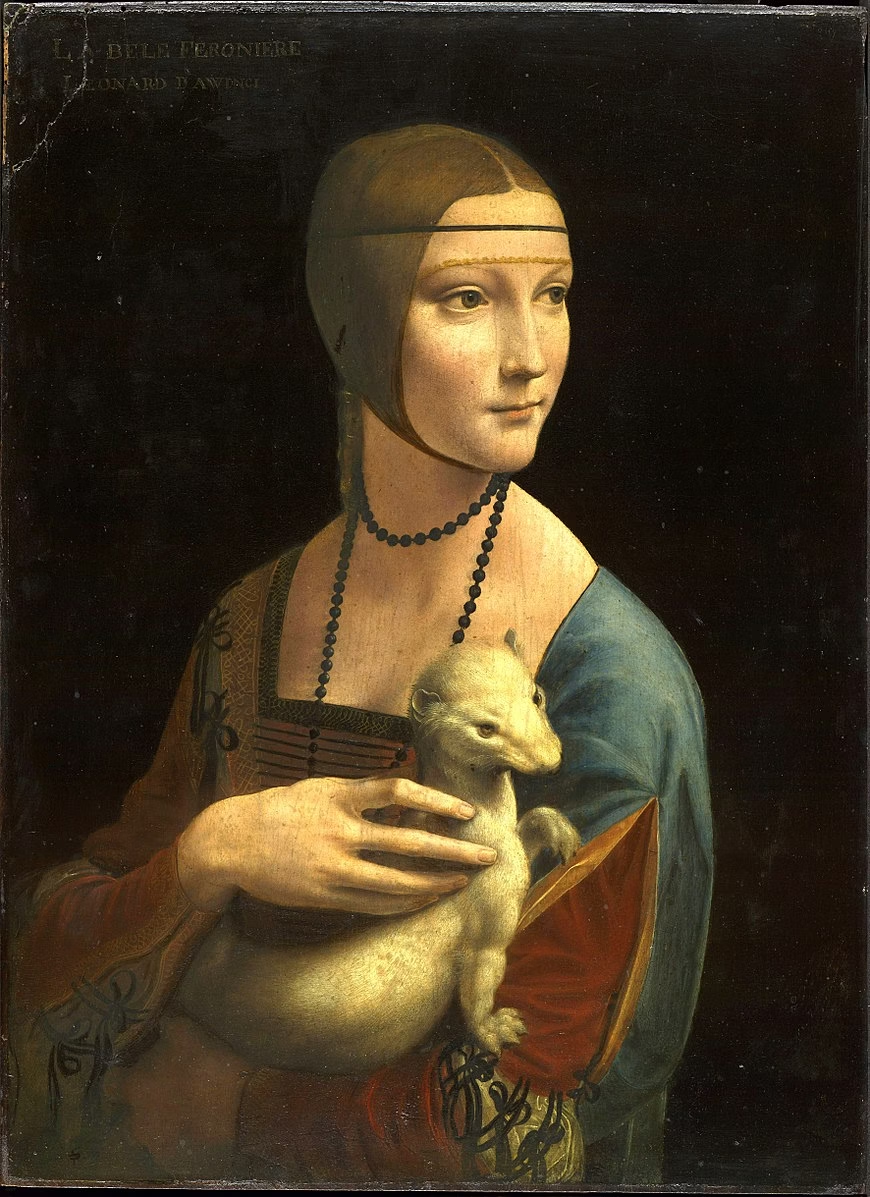Cecilia Gallerani was born in 1473 into a well-educated and noble family in Milan. She was renowned not just for her beauty but also for her intelligence and artistic talents. Cecilia was a poet and musician, and her wit and charm made her a notable figure in Milanese society from a young age.
Around 1489, when Cecilia was about 16 years old, she became the mistress of Ludovico Sforza, known as Il Moro(“The Moor”). Ludovico was the powerful Duke of Milan and a major patron of the arts, employing Leonardo da Vinci at his court. Their relationship blossomed during a time when Ludovico was engaged to marry Beatrice d’Este, a political union aimed at strengthening alliances. Despite this, Ludovico and Cecilia shared a deep connection, and their romance became well-known at court.
Leonardo painted The Lady with an Ermine during this period, capturing Cecilia at the height of her influence. The ermine is believed to symbolize Ludovico himself — not only was the ermine his emblem, but in Renaissance symbolism, it also represented purity and strength, perhaps hinting at the Duke’s protective affection for Cecilia.
Their relationship ended when Ludovico married Beatrice d’Este in 1491. As part of the transition, Cecilia was sent away from court and married Count Ludovico Carminati de Brambilla, a nobleman. She lived a long life, continuing to write poetry and host salons, where intellectuals gathered to discuss philosophy and art.






